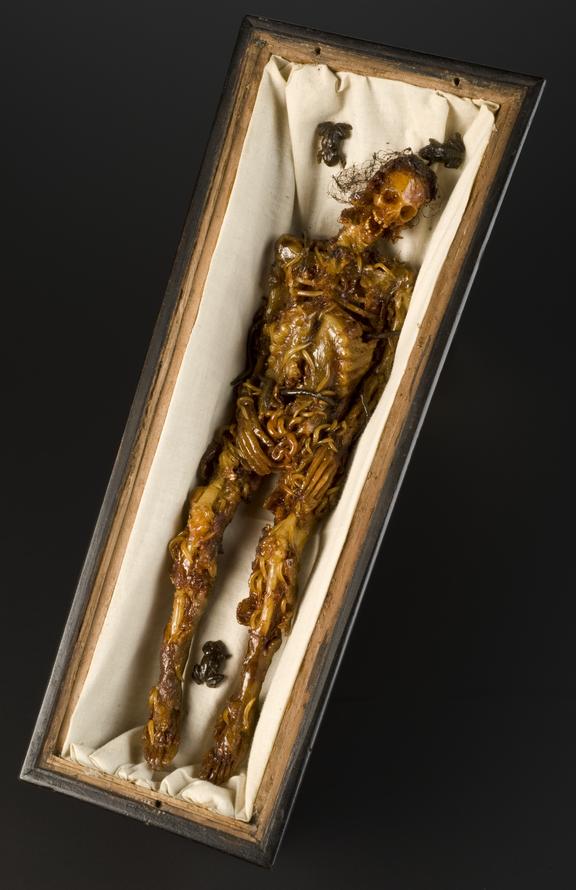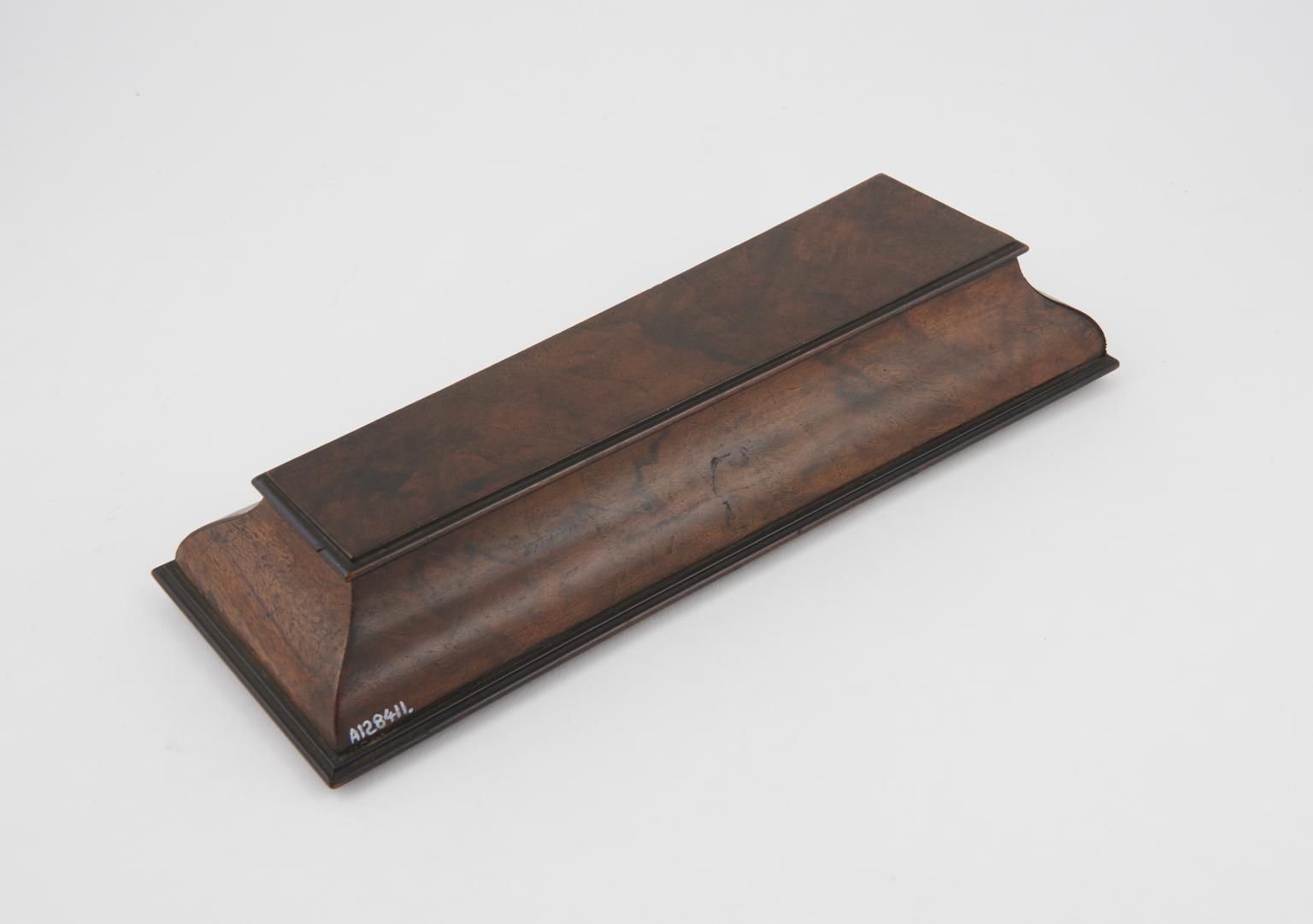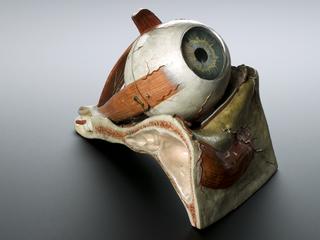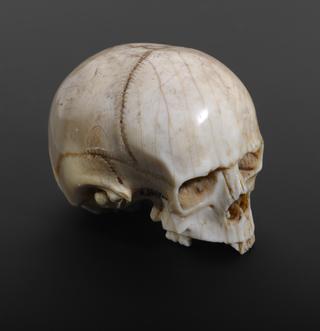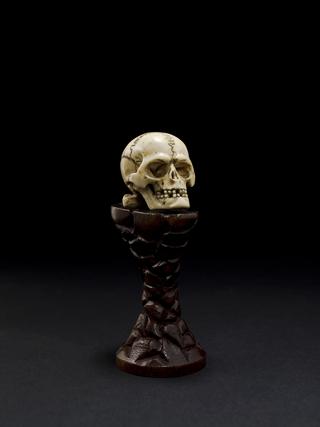
Wax model of a decomposing body in a walnut coffin, Italy, 1774-1800
Late 18th century Italian wax model of a decomposing body in a walnut coffin, Italy, 1774-1800
More
The body in this wooden coffin is in a severe state of decomposition. It may have had two purposes: as ‘memento mori’, a reminder of death, or as a teaching aid. The figure is surrounded by three frogs. Frogs are symbols of rebirth and regeneration because they change so much in their lifetimes.
Wax modelling was used in Europe to create religious effigies. From the 1600s, they were also used to teach anatomy. The creation of wax anatomical models, centred in Italy, was based on observing real corpses. The museum known as La Specola, or ‘the observatory’, in Florence was famous for its wax collection.
- Measurements:
-
overall: 82 mm x 296 mm x 118 mm,
- Materials:
- wax , walnut (wood) , glass and textile
- Object Number:
- A128411/1
- type:
- coffin
- Image ©
- The Board of Trustees of the Science Museum


